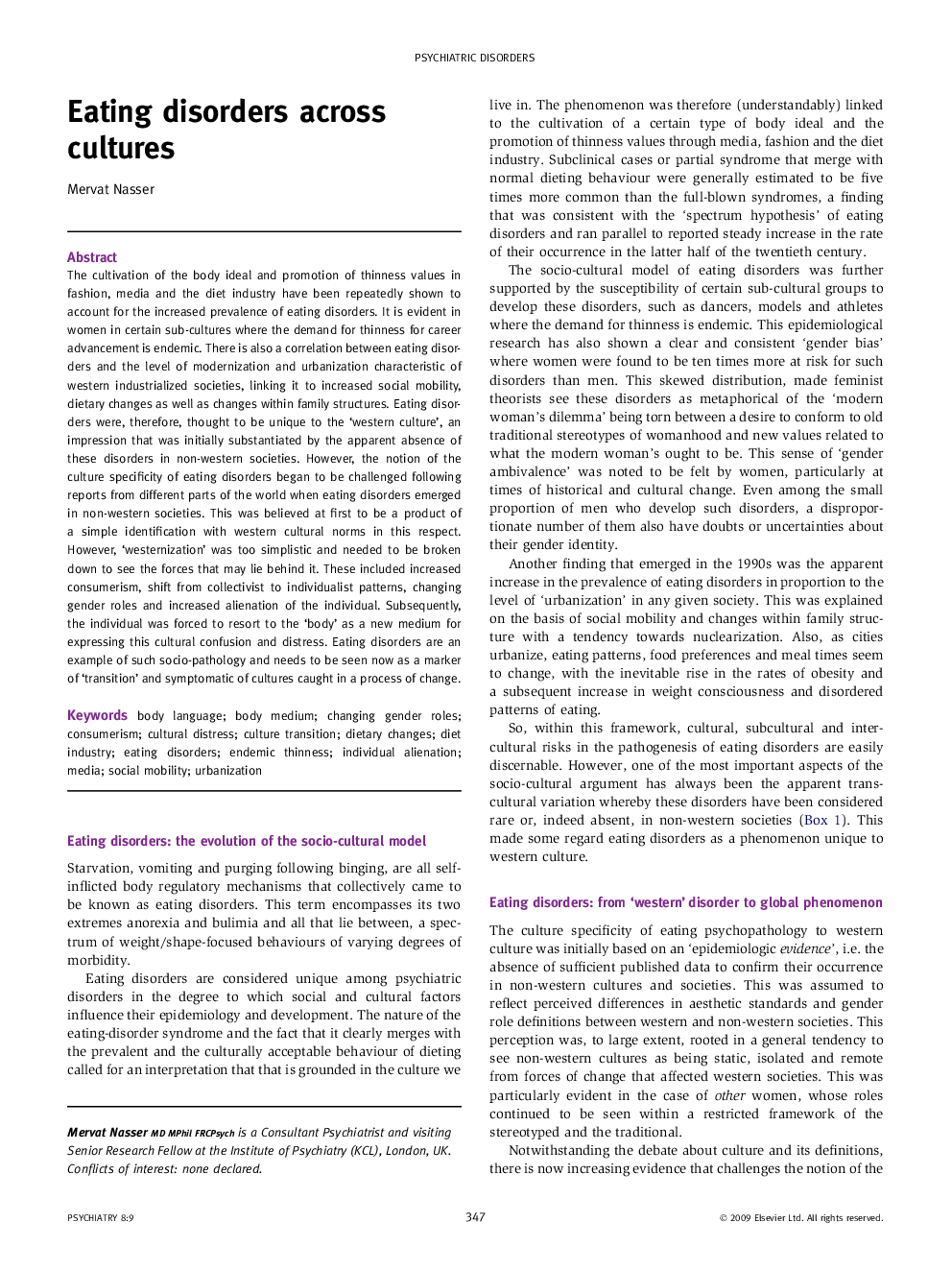| Article ID | Journal | Published Year | Pages | File Type |
|---|---|---|---|---|
| 4189841 | Psychiatry | 2009 | 4 Pages |
The cultivation of the body ideal and promotion of thinness values in fashion, media and the diet industry have been repeatedly shown to account for the increased prevalence of eating disorders. It is evident in women in certain sub-cultures where the demand for thinness for career advancement is endemic. There is also a correlation between eating disorders and the level of modernization and urbanization characteristic of western industrialized societies, linking it to increased social mobility, dietary changes as well as changes within family structures. Eating disorders were, therefore, thought to be unique to the ‘western culture’, an impression that was initially substantiated by the apparent absence of these disorders in non-western societies. However, the notion of the culture specificity of eating disorders began to be challenged following reports from different parts of the world when eating disorders emerged in non-western societies. This was believed at first to be a product of a simple identification with western cultural norms in this respect. However, ‘westernization’ was too simplistic and needed to be broken down to see the forces that may lie behind it. These included increased consumerism, shift from collectivist to individualist patterns, changing gender roles and increased alienation of the individual. Subsequently, the individual was forced to resort to the ‘body’ as a new medium for expressing this cultural confusion and distress. Eating disorders are an example of such socio-pathology and needs to be seen now as a marker of ‘transition’ and symptomatic of cultures caught in a process of change.
